
Motivation, Organization and Satisfaction Aboard Ship
Robert L. Helmreich, John A. Wilhelm & Thomas E. Runge
The University of Texas at AustinPresented at
The Seventh Annual Maritime Industry Symposium
California Maritime Academy
Vallejo, California
May 19, 1981Brought to you by Martin's Marine Engineering Page, comments to [email protected]
The research reported here was supported by NASA Grant NSG 2065 (Robert L. Helmreich, Principal Investigator) and NASA University Consortium Interchange NCA 2-OR100-901 with the California Maritime Academy. Special thanks are due Admiral J.P. Rizza and Captain Mayer Armbrust of CMA and to Dr. Robert Donaldson of ARCO Shipping Co., Mr. D.N. Brainard of Chevron Shipping Co., Mr. Paul Sparks and Mr. D.J. Paul, Jr., of EXXON, USA, and Dr. Jack Glazer and Dr. R. Mark Patton of NASA for their assistance throughout the project.
Shipboard life contains a number of elements of particular interest to the research psychologist. These include isolation from friends and family, intermittent danger, boredom, forced contact with others, and the inescapability of the environment. These characteristics are shared with a number of other environments in which crew performance and adjustment are vital, such as Arctic and Antarctic stations (Gunderson, 1966), spacecraft (Helmreich, Wilhelm, & Runge, 1980), offshore drilling rigs, and undersea habitats (Radloff & Helmreich, 1968; Helmreich, 1971). In each of these settings there is a possibility of catastrophic results from human failure and a high potential payoff for selecting individuals and organizing the environment to maximize performance and participant satisfaction. It is, of course, axiomatic that an unhappy, disaffected crewmember is unlikely to deliver outstanding performance and may adversely affect the performance and adjustment of co-workers.
The following discussion will focus on motivational characteristics of licensed and unlicensed VLCC crewmembers and how these combine with organization and environmental factors to determine job and life satisfaction. We will further attempt to specify organizational changes that might improve the quality of shipboard life and, concurrently, productivity and safety.
The data of the study were drawn from a survey of U. S. flag VLCC fleets of three major oil companies. Usable responses were obtained from 350 crewmembers serving aboard 37 ships. Surveys were completed anonymously and returned by mail to the authors at The University of Texas.
The questionnaire contained items dealing with overall life satisfaction, job satisfaction, satisfaction with pay, the physical environment, and other work related attitudes. In addition, five motivational/personality scales were included from larger instruments developed by Janet T. Spence and the senior author (Helmreich & Spence, 1978; Spence & Helmreich, 1978). These scales measure Instrumentality - global goal or achievement orientation, Expressivity - interpersonal sensitivity and concern, and three more focused aspects of achievement motivation: Mastery - preference for challenging tasks and meeting internal standards of excellence; Work -desire to work hard and perform well, and Competitiveness - desire to compete with and outperform others. These measures are seen as relatively stable internalized components of personality. Combinations of these measures have proved to have high predictive validity in accounting for variations in such diverse criteria as income in businessmen, scientific attainment, and college grades (Helmreich & Spence, 1978; Helmreich, Spence, Beane, Lucker, & Matthews, 1980), life, job, and leisure satisfaction (Runge, 1980), and feelings of self worth and marital satisfaction (Spence & Helmreich, 1978). All of the scales except Competitiveness have been found to be positively associated with relevant criteria. The latter, however, has repeatedly been found to be a negative indicator of performance (for example, in predicting income, scientific achievement, and grades).
Turning to the survey results, the sample is middle aged (average age 38) with the youngest groups being junior licensed officers and the oldest, Captains and Radio Officers. Considerable experience (average 14 years) and job stability (more than 10 years with the present company) is also evident. As a whole, the sample is well educated with the average attainment being some college. The majority (63%) are currently married. Means for the motivational/personality measures are shown in Table 1. Insufficient data were available to break down the female crew members. The most important point in these data is the overall similarity in personality of the tanker crews to other achieving groups we have studied in which these measures were associated with individual performance and/or adjustment. In particular, California Maritime Academy Midshipmen, whom we surveyed at the same time, show a very close match with comparable junior officer groups. There is no evidence in these data for the existence of a "seafaring personality" or for any personality deficits among the several shipboard groups.
Table 1. Means for Personality/Motivation Scales for Male VLCC Crewmembers
| UNLIC.
DECK |
UNLIC.
ENG. |
MESS | RADIO
OFF. |
LIC.
DECK |
LIC.
ENG |
CHIEF
MATE |
CHIEF
ENG. |
MASTER | |
| INST** | 21.0 | 22.3 | 23.1 | 19.9 | 21.8 | 22.5 | 21.5 | 23.7 | 24.5 |
| EXP** | 21.5 | 23.8 | 25.0 | 20.5 | 21.6 | 22.5 | 21.0 | 21.7 | 21.2 |
| MAST* | 20.0 | 20.6 | 18.9 | 21.2 | 20.5 | 21.9 | 21.0 | 21.7 | 23.0 |
| WORK | 20.5 | 20.9 | 20.2 | 21.1 | 20.4 | 21.3 | 20.7 | 21.6 | 21.8 |
| COMP* | 12.7 | 11.6 | 13.7 | 9.6 | 12.9 | 11.8 | 12.3 | 11.9 | 14.5 |
Although they are frequently statistically significant, the differences between the various shipboard job classifications are not large. However, the differences that do occur appear to be theoretically meaningful: Captains and Chief Engineers generally show the most favorable constellation of attributes, suggesting that organizations value the characteristics we have found to be positive predictors of success. Mess personnel are notably high in Expressivity or concern for others and low in Mastery, a combination that suggests considerable self-selection into this specialty. Radio Officers tend to be low in both Instrumentality and Expressivity.
Female crewmembers as a group tend to score higher on positive traits than males, a finding paralleled in comparisons of male and female cadets at the California Maritime Academy. An implication of this is that women entering non-traditional professions in which they may encounter considerable resistance, if not hostility, as a function of their gender are often more strongly motivated and psychologically adapted than traditional members of such groups.
The Quality of Work and Shipboard Life.
Among the central measure taken were ratings of job satisfaction, satisfaction with pay, evaluation of the habitability of the ship, and a composite rating of life satisfaction. Correlations among these measures in the whole sample are shown in Table 2. Overall, life satisfaction was significantly related to job satisfaction, satisfaction with pay, and positive evaluations of the physical environment of the ship. Job satisfaction showed by far the strongest relationship with life satisfaction, a finding consistent with other research that has shown that, at least for males in our society, work is the major determinant of life satisfaction (e.g., Runge, 1980). An interesting contrast is found in the relationships of pay satisfaction with job and life satisfaction. Whereas pay contributes substantially to life satisfaction, it is only minimally related to job satisfaction. This suggests that while money may buy happiness, it won't necessarily lead to liking for an otherwise unrewarding job. Ratings of shipboard habitability were positively though modestly related to the other satisfaction measures.
Table 2. Correlations Among Satisfaction Measures
| LIFE SATISFACTION | -- | ||
| JOB SATISFACTION | .44* | -- | |
| PAY SATISFACTION | .29* | .10 | -- |
| ENVIR. SATISFACTION | .16* | .25* | .19* |
| LIFE
SATISFACTION |
JOB
SATISFACTION |
PAY
SATISFACTION |
* P < .001
Global life satisfaction does not differ significantly as a function of job classification (Radio Officers are most satisfied, Mess Personnel least). There were, however, large and significant differences between the job classifications on other measures of satisfaction and in perceptions of jobs and the shipboard environment. Figure 1 shows the average job satisfaction for the nine occupational classifications. Overall, crewmembers are relatively satisfied with their jobs. This is doubtless reflected also in the considerable employment stability of this sample and the fact that 63% report planning to remain at sea until retirement. Not surprisingly, Captains and Chief Engineers report the highest levels of satisfaction with their work. Unlicensed deck seamen are least satisfied. It is noteworthy that at all levels Engineering personnel are more satisfied with their jobs than those in the Deck Department. This may reflect a more limited scope of work for the deck force concurrent with increased responsibilities for the Engineering Department with increased automation of ships (Smith & Roggema, 1980).
Figure 2 shows satisfaction with pay across job classifications. As we have noted, pay was not strongly related to job satisfaction and the differences among groups are of marginal significance. Chief Engineers and Radio Officers are most content with their pay while Mess personnel and Chief Mates are least pleased.

Figure 1. Job Satisfaction broken down by job classification.
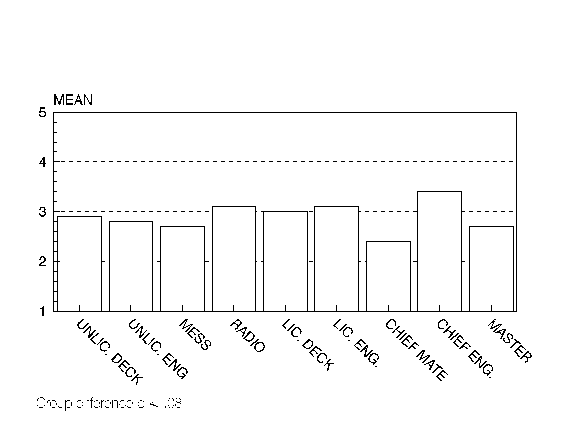
Figure 2. Satisfaction with pay by job classification.
Figure 3 presents crewmembers' ratings of the challenge of their jobs. Perceived challenge is significantly and positively correlated with job satisfaction (r = .36, p = .001) with job satisfaction. Again, the discrepancy between Deck and Engineering is evident with deck personnel reporting their abilities less fully employed. Radio Officers also perceive their skills and abilities to be underutilized.
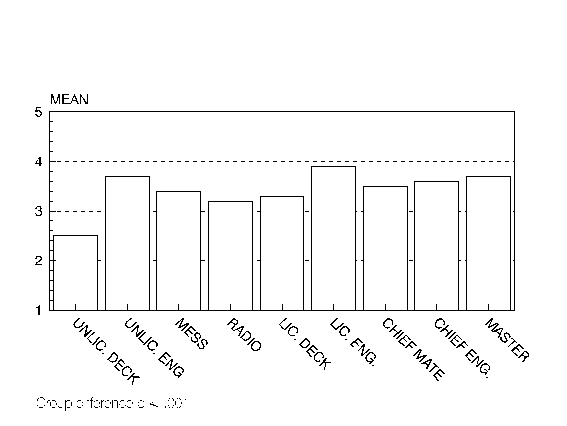
Figure 3. Ratings of job challenge by job classification.
Related to perceived challenge are ratings of the extent to which the job uses personal skills and abilities, as shown in Figure 4. Use of skills correlates very strongly (r =.36, p =.001) with job satisfaction. Again, the discrepancy between Deck and Engineering is evident with deck personnel reporting their abilities less fully employed. Radio officers also perceive their skills and abilities to be underutilized.
Ratings of shipboard habitability are shown in Figure 5. These ratings are a composite of evaluations of lounges, living quarters, entertainment, food, etc. These ratings, as previously shown, are moderately related to job satisfaction (r = .25, p = .001). Mess personnel are by far most pleased with the habitability of their ships (probably due in part to their role in contributing to shipboard life). Radio Officers, on the other hand, who are quite satisfied with their jobs, perceive the environment rather negatively. As this group works less than any other, one can hypothesize that having considerable free time can lead to discontent with available facilities. It is interesting, although not readily explainable, that the most senior officers, Captain, Chief Engineer, Chief Mate, are much less positive about their ships than unlicensed personnel and junior officers.
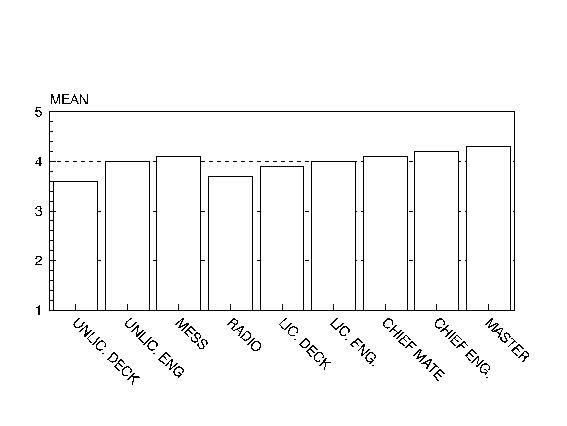
Figure 4. Ratings of extent to which skills and abilities are used by job classification (higher scores indicate more use)
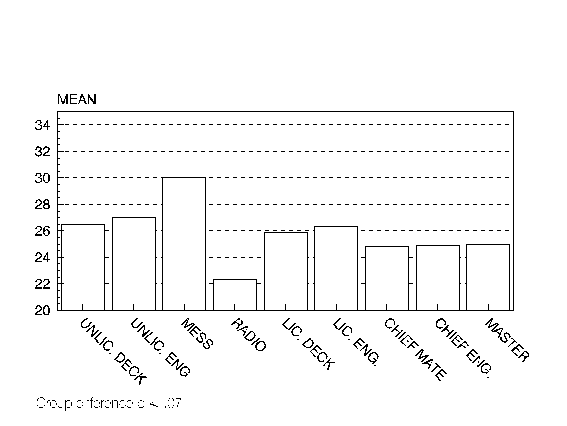
Figure 5. Overall ratings of shipboard environment by job classification (higher ratings indicate greater satisfaction).
To summarize, job satisfaction is a strong determinant of overall life satisfaction. Shipboard job evaluation is influenced by several factors, most significantly the utilization of skills and perceived challenge of the work. It is important to note that satisfaction with pay is only minimally related to job satisfaction and that the habitability of the environment plays a relatively minor role in determining evaluations of work. The emerging profile is of individuals who value challenging work and the utilization of their abilities. The picture, however, becomes far more complex when individual characteristics are related to job satisfaction within shipboard groups.
Motivation and Job Satisfaction
As we have pointed out, personnel in the Engineering Department are much more satisfied with their jobs than those in the Deck Department, with differences between unlicensed groups being particularly marked. Comparison of the individual determinants of satisfaction in the latter two groups makes clear the interplay between the person and the organization. Using the technique of multiple regression, the association between personality/motivational factors and job satisfaction was determined. Looking first at unlicensed Engineers, four of the five personality factors are positively associated with job satisfaction as shown in Table 3. Work, Mastery, Instrumentality and Expressivity all are positive predictors of satisfaction while Competitiveness has a negative correlation. (2) The personality-satisfaction relationships are quite strong and indicate that, in a job perceived as being challenging and demanding of skill, the same pattern of personality factors we have found to predict superior performance in other groups accounts for a substantial proportion of the variability in work attitudes.
| Simple Correlation | Beta Weight | |
| Mastery/Work | .45 | .80 |
| Instrumentality/Expressivity | .43 | .06 |
| Competitiveness | -.16 | -.64 |
Multiple R = .70
F = 8.02, p < .001
Table 3.
Personality predictors of job satisfaction for unlicensed
engineers.
Using the same personality variables, a strikingly different pattern of results was found among unlicensed Deck personnel. Achievement motivation and Expressivity are negatively associated with job satisfaction as shown in Table 5. Thus, within a group that considers its work to be relatively less rewarding and challenging, lower levels of motivation are correlated with positive evaluations of the job. This suggests that this component of the shipboard organization is not meeting the needs of many of its most psychologically adapted members.
| Simple Correlation | Beta Weight | |
| Mastery/Work | .41 | -.42 |
| Instrumentality/Expressivity | -.27 | -.22 |
| Competitiveness | -.16 | .14 |
Multiple R = ..47
F = 3.35, p < .001
Table 4. Personality predictors of job satisfaction for unlicensed deck seamen
The situation with junior officers, both Deck and Engineering, is more comparable to that of the unlicensed Engineers, as shown in Table 5. Again, Mastery, Work, Instrumentality, and Expressivity are positively associated with satisfaction while Competitiveness shows a weak negative relationship.
| Simple Correlation | Beta Weight | |
| Mastery/Work | .23 | .19 |
| Instrumentality/Expressivity | .22 | .18 |
| Competitiveness | -.03 | -.15 |
Multiple R = .30
F = 3.12, p < .03
Table 5. Personality predictors of job satisfaction for junior officers
A word about the generally negative influence of interpersonal competitiveness may be in order. Folk wisdom holds that a high level of competitiveness is essential for survival in a dog eat dog, free enterprise society, yet we have consistently found lower competitiveness to be associated with attainment. It seems likely that the glorification of competitiveness represents a myth from a simpler past. In a highly interdependent society, competition among individuals can interfere with necessary collaboration and cooperation. This is likely to be especially true in a small, closed environment such as a ship.
The Need for Organizational Change
The crews surveyed in the present study are, as a whole, psychologically healthy, well motivated, and anxious to be challenged by their work. They also show a high level of employment stability. The data reported here suggest strongly, however, that the present shipboard organization, at least in the fleets studied, is not responsive to the needs and capabilities of many crewmembers. There is an uneven distribution of workload, of the challenge involved in work, and in resultant job satisfaction across departments and ranks. Especially in small, self-contained environments such situational inequality is potentially threatening to overall productivity and morale. One could, of course, attempt to solve the problem by selecting less motivated and qualified personnel for the more mundane and less challenging shipboard roles, but such a procedure is hardly likely to improve the overall effectiveness or emotional climate of a ship.
The best approach to the problem would appear to be to restructure shipboard organization to provide job enrichment and more equality of challenge and utilization of abilities. The type of change most likely to produce the desired outcome would not be a minor alteration of current roles but a thorough redefinition of shipboard responsibilities and the interface of the ship with shore-based management. It should be acknowledged at the outset that change is not easy to implement and that attempts at change will usually encounter massive resistance. This is particularly like to be the case in the maritime industry because of inertia from long-standing nautical tradition, powerful organizational pressures for the status quo and the fact that shipping is massively, if ineffectively, regulated by the Federal government.
On the other hand, change has a reasonable probability of success if it can be shown to benefit the individual (as through increased job and life satisfaction), the organization (through more effective operation), and the society (for example, by reducing the probability of catastrophic accidents). It seems likely that all these elements may be recognized in the U.S. Merchant Marine. It is noteworthy that consideration of such issues has taken place in Europe and that exploratory work has been undertaken in several shipping firms (Smith & Roggema, 1979; 1980).
At the individual level, enriching shipboard jobs does not imply forcing additional work on unwilling workers, but rather adding scope and challenge to jobs presently limited by vertical and horizontal demarcations. Evidence for the openness to change of licensed and unlicensed crewmembers is found in responses to two survey items dealing with the amount of challenge and effort expenditure desired in shipboard jobs. The mean responses of all shipboard groups except Mess personnel were in the direction of desiring more challenge in work (Mess personnel, on the average, felt that the level of challenge was just right). The groups most desirous of increased challenge were unlicensed Deck personnel and junior Deck officers.
Concerning the question on work, all officer groups and unlicensed Engineers had average scores reflecting that they would be happy to work harder. Only unlicensed Deck and Mess personnel reported a definite preference for working less hard. In the case of the Deck force, it is probably that these responses indicate a desire to avoid dull and unrewarding labor rather than a disdain for work.
Smith and Roggema (1979) have specified four directions for organizational change to adapt to increasing technological diversity in shipping and to fill the need to attract and retain qualified seafarers. These are: (1) Matrix organization: going from a hierarchical and departmentalized organizational structure towards a more flexible division of functions and authority. (2) Stratified crews: moving from a castle-like division between officers and ratings to a more complex differentiation of skills and responsibility. (3) Crew stability: changing from a lack of stability towards crew stability and continuity. (4) Decentralization: from a centralization of decision-making in the company office to a greater degree of authority for decision making board ship and a collaborative decision-making process between ship and shore.
The strategies outlined by Smith and Roggema are highly congruent with the implications of our data. The notions of a matrix organization and crew stratification provide a mechanism for giving crewmembers richer and more diverse work experience, equalizing workloads, and using skills more completely. Inherent in this approach is the concept of cross-utilization of personnel. Individuals can be assigned both primary and secondary work responsibilities that transcend traditional departmental lines. As shipboard automation changes the mix of skills required and work demands in different specialties, the traditional officer/rating and departmental distinctions are becoming increasingly obsolete. Managerial skills, on the other hand, remain at a premium but are insufficiently utilized at all levels under the current structure. The matrix organization fosters both responsibility and interdependency by placing individuals in both leader and follower roles and further provides flexibility in work assignments. A concomitant of this type of structure should be greater group cohesiveness and identification with the ship rather than departmental subgroups.
An additional factor critical to work group cohesiveness and organization identification is crew stability. With a facilitating organization, stability in crew composition should foster a team concept and result in superior performance and perceived quality of work life. Similarly, if stable crews are assigned to particular ships rather than rotated through a variety of vessels and if such crews are given greater long-term responsibility for maintaining, planning, and other aspects of vessel operation, the benefits in terms of effective ship operation should be substantial.
Data on attitudes toward crew stability and more permanent ship assignment were also collected as part of the survey. Respondents were asked how they would feel about working with the same shipmates on each trip. The average response overall was favorable and of the nine job categories only Deck ratings were less than neutral about the prospect. Crews were also asked how they would feel about working on the same ship on each trip. Overall, responses were even more positive than to the crew stability question. Only unlicensed Deck personnel were not positive about the concept. Thus there is a pervasive feeling that a more permanent attachment to shipmates and ship would improve the quality of work life. The expressed desire for such stability was also related to individual motivational characteristics. This was examined using multiple regression and a composite (sum) of the crew and ship continuity questions. Mastery-Work and Instrumentality-Expressivity were significantly and positively correlated with the desire for stability while Competitiveness was unrelated to the measure. These data provide further support for the strength of the motivational pattern we have isolated as a determinant of global work attitudes.
Decentralization in terms of shifting more decision making authority (for example, regarding personnel management, training, maintenance, etc.) to the ship from shore-based management should increase the challenge of shipboard work at all levels, but particularly for senior officers. Technological advances in communication can allow for much more extensive consultation and collaboration between shipboard and shore management and can also provide mechanisms for reducing onerous paperwork requirements on vessels which have no on-board clerical support. Smith and Roggema (1979) point out that this proposed change can create a much broader conceptualization of the senior officer role in which responsibility is defined as managerial accountability in addition to statutory culpability. They also note that, under the traditional organization, the perceived workload of the senior officers is markedly lower than that of junior officers and that some junior officers aspire to Mate or Second Engineer ranks but question the desirability of Captain or Chief Engineer billets.
The present data fit nicely with this view of the senior officer role. Figure 6 shows the distribution of workload (both regular and overtime) across job classification. Captains and Chief Engineers put in the fewest hours (with the exception of Radio Officers) while Chief Mates spend the greatest amount of time working. The averages of both Captains' and Chief Engineers' responses indicate that many feel a desire for more challenge in the work roles and a very strong willingness to work harder. It is evident that the senior officers view themselves as somewhat underutilized. From a motivational perspective, leaders who are under employed and work less relative to their subordinates are hardly ideal role models.
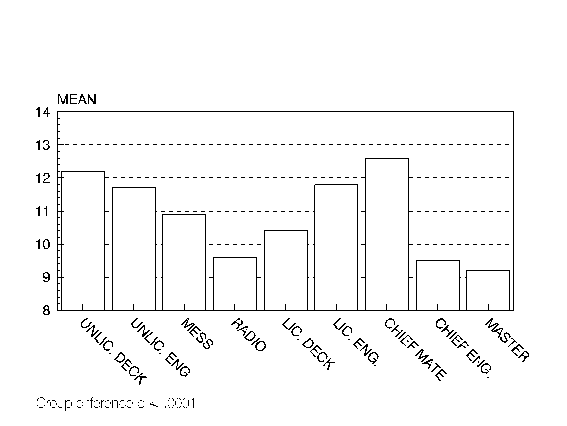
Figure 6. Average hours per day reported to be worked by job classification.
The maritime industry is not unique in facing shifting role demands caused by technological innovation and automation while being saddled with an inflexible organizational structure. Commercial aviation is also experiencing rapid technological shifts, burgeoning personnel costs, and high levels of job specialization and hierarchical rank distinctions that often lead to hostility among sub-groups such as pilots, flight attendants, ground crews and customer service personnel. A recently formed regional carrier has attempted to counter these negative forces by abolishing rigid job distinctions and exploiting the potential of personnel cross-utilization. The ensuing organization is generally horizontal with only three levels of management and the assignment of all individuals to work teams. The cross-utilization of personnel transcends traditional divisions. For example, a new role defined as Customer Service Manager combines functions formerly filled by Flight Attendants, Gate Agents and the Reservations Department, with personnel working in each of these areas as well as on staff assignments on a rotating basis. Similarly, pilots, instead of serving only as airplane drivers for a fixed and limited number of hours per month, also fill secondary roles in Operations, Maintenance, Training and Personnel, or staff assignments. Although the verdict is not yet in on the effectiveness of this type of organization, it represents an attempt to deal with many of the issues noted in the shipboard situation.
Whether new types of organization evolve along the lines discussed here and whether they are imposed before or after the current organization fails to maintain an adequate quality of work experience and productivity remains to be seen. It does seem safe to predict that the traditional shipboard organization will not endure.
References
Gunderson, E.K.E. (1966). Adaptation to extreme environments: Prediction of performance. San Diego: Navy Neuropsychiatric Research Unit, Report #66-17.
Helmreich, R.L. (1972). The Tektite 2 Human Behavior Program. In J.W. Miller, J. VanDerWalker, & R. Waller (Eds.), Scientists in the Sea. Washington, DC: Government Printing Office.
Helmreich, R.L., & Spence, J.T. (1978). The Work and Family Orientation Questionnaire: An objective instrument to measure components of achievement motivation and attitudes toward family and career. JSAS Catalog of Selected Documents in Psychology, 8, 35, MS 1677.
Helmreich, R.L., Wilhelm, J.A., & Runge, T.E. (1980). Psychological considerations in future space missions. In S. Chester & D. Winter (Eds.), The human factors of outer space production. Washington, DC: American Association for the Advancement of Science.
Helmreich, R.L., Spence, J.T., Beane, W.E., Lucker, G.W., & Matthews, K.A. (1980). Making it in academic psychology. Journal of Personality and Social Psychology, 39, 952-967.
Runge, T.E. (1980). Work, leisure and personality: A multivariate approach to life satisfaction. Austin, TX: The University of Texas at Austin. Unpublished doctoral dissertation.
Smith, M.H., & Roggema, J. (1979). Emerging organizational values in shipping: Part 1. Crew stability., Part 2. Towards a redistribution of responsibility on board ship. Maritime Policy Management, 6, 129-156.
Smith, M.H., & Roggema, J. (1980). Emerging organizational values in shipping: Part 3. The matrix organization. Unpublished manuscript.
Spence, J.T., & Helmreich, R.L. (1978). Masculinity and femininity: Their psychological dimensions, antecedents, and correlates. Austin, TX: University of Texas Press.